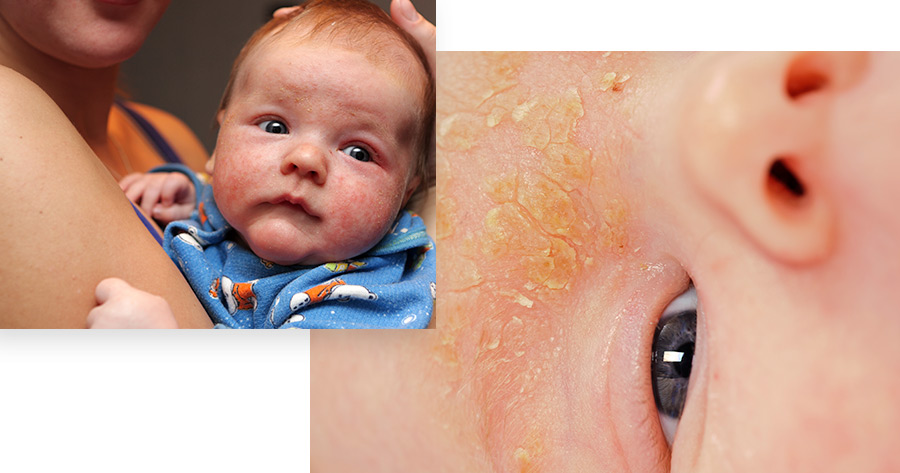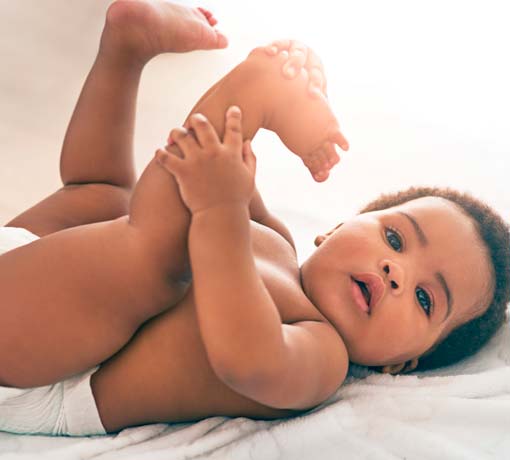What Is Cradle Cap? Here’s What to Know
Cradle cap, medically known as seborrheic dermatitis, creates a red, scaly, and itchy rash on a baby’s scalp. Luckily, it usually clears up when a baby reaches 8 to 12 months of age.
For some, medical intervention is needed to treat cradle cap easily and effectively, providing long-term relief for your child.
If you or your child is living with cradle cap symptoms, we are here to help.
At Advanced Dermatology, PC, we offer guidance on how to get rid of the cradle cap, ensuring your baby’s comfort and healthiest skin. Continue reading to learn more below.

What Causes Cradle Cap?
Cradle cap is a skin condition with an unknown cause. Research believes cradle cap development may involve factors like overactive oil glands or a yeast-like fungus.
Symptoms
The symptoms of cradle cap can vary in type and severity but often include
- Red, scaly patches on the scalp
- Greasy or oily skin covered with flaky, white, or yellowish scales
- Itchiness on the scalp
- Mild skin irritation or redness around the affected area

How to Treat Cradle Cap
Mild cases of seborrheic dermatitis can be treated by gently shampooing the scalp with a baby shampoo to remove some of the scales. You can also use a soft brush while shampooing or apply mineral oil on the scalp to lift the scales. Do not rub hard, as you may exacerbate the problem.
Parents should seek medical guidance and treatment from a dermatologist if the condition is widespread or severe. Prescribed treatment may involve
- Medicated shampoos or cleansers
- Topical creams or ointments to soothe the affected areas
- Special brushes or combs to gently remove scales
In severe cases, oral medications may be required.
How to Prevent Cradle Cap
To help prevent cradle cap, try these tips
- Gently wash your baby’s scalp regularly with a mild baby shampoo
- Softly brush or comb your baby’s scalp to remove any scales
- Keep your baby’s skin moisturized with oil or a gentle lotion
- Avoid harsh soaps or over-washing the scalp, as it might worsen the condition
You should consult a pediatrician or dermatologist for guidance if you notice signs of cradle cap developing.
Frequently Asked Questions About Cradle Cap
Learn more about seborrheic dermatitis through these commonly asked questions and answers to help you manage this common scalp condition in babies.
How Do You Get Rid of Cradle Cap on Babies?
Cradle cap is a common type of dermatitis that affects babies’ skin. Sometimes, you can get rid of cradle cap by washing your baby’s hair with chemical-free and tear-free shampoo. However, consulting a dermatologist is the best way to find a solution quickly.
Can You Pick Off Cradle Cap?
Cradle cap can be gently brushed off after washing your baby’s hair with gentle, non-chemical products. However, you should not pick off the scales by hand. A certified dermatologist can remove the cradle cap and provide a solution that keeps your baby comfortable and happy.
Does Cradle Cap Make Hair Fall Out?
If not treated properly or left unattended, cradle cap can get worse and produce temporary hair loss. Even though it is not permanent, preventing it from getting to this stage is crucial as it can eventually produce visible symptoms that could disrupt your baby’s comfort levels.
How Long Does Cradle Cap Last?
In most cases, cradle cap will recede naturally once your baby reaches 6 to 12 months of age. However, it is important to monitor how it develops and consult with a dermatologist if the symptoms persist past this stage.
Why Does Cradle Cap Keep Coming Back?
Even though the scaly rash can be removed, seborrheic dermatitis may return a few months after treatment. Cradle cap remedies only target the symptoms. As a result, there is a chance that the hyperactive sebaceous glands that produce the condition in the first place produce symptoms a second time. If these persist, make sure to consult with a dermatologist to implement the correct treatment plan.
Get Treatment for Cradle Cap Close to Home
Your child doesn’t have to live with an itchy, red, sore scalp caused by seborrheic dermatitis. Effective treatment is available from our expert team at Advanced Dermatology, PC.
